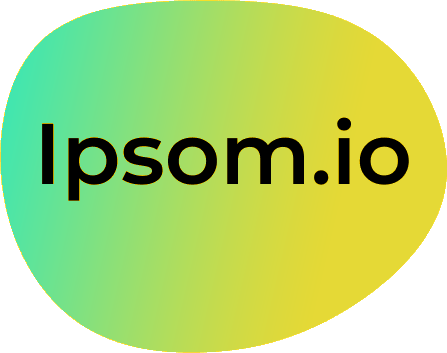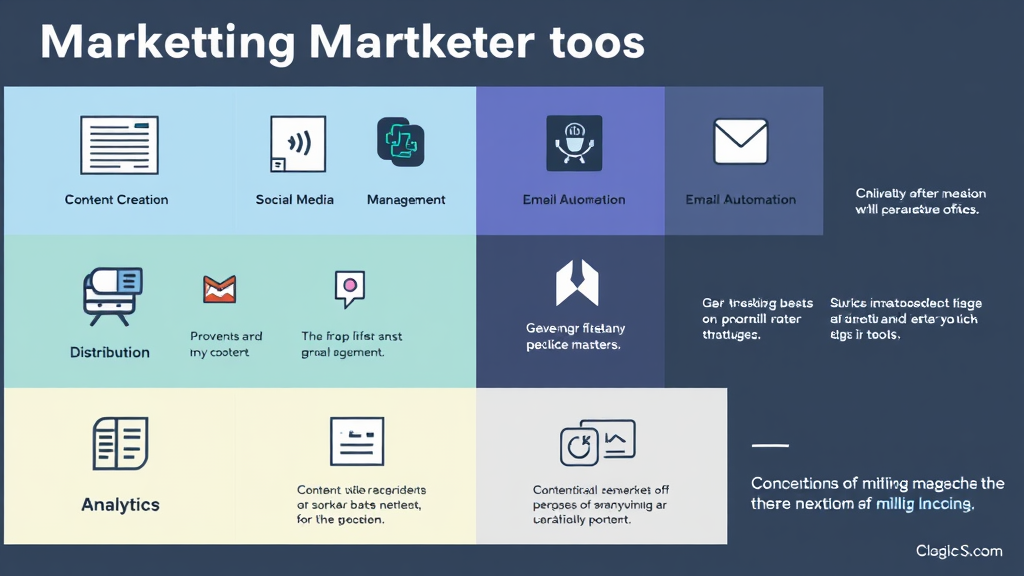Content marketing automation leverages technology to streamline and automate various aspects of content marketing, including creation, distribution, and analysis. By implementing automation, businesses can enhance efficiency, maintain consistency, and deliver personalized content to their target audiences. This blog post explores the key components, benefits, and best practices of content marketing automation to help you optimize your marketing strategy.
Key Findings
-
Increased Efficiency: Automation reduces manual tasks, allowing marketers to focus on strategic planning and creative development.
-
Consistent Content Delivery: Automated scheduling ensures regular content distribution across multiple platforms, enhancing audience engagement.
-
Enhanced Personalization: Automation tools enable tailored content delivery based on user behavior and preferences, improving relevance and conversion rates.
-
Scalability: Automation facilitates the expansion of content efforts without significant manual intervention, supporting business growth.
-
Data-Driven Insights: Automated analytics provide valuable data to inform content strategy and optimize marketing campaigns.
-
Improved Collaboration: Automation tools support seamless collaboration among marketing teams, enhancing workflow efficiency.
Understanding Content Marketing Automation: Definition and Key Components
Content marketing automation involves utilizing software and technologies to streamline and automate various aspects of content marketing, including creation, distribution, and analysis. This approach enhances efficiency, ensures consistency, and enables personalized content delivery at scale.
Key Components of Content Marketing Automation:
-
Content Planning and Scheduling: Developing a centralized content calendar to organize creation timelines, publication dates, and distribution channels, ensuring timely and coordinated content delivery.
-
Automated Content Creation: Employing tools that offer templates and workflows to facilitate the generation of various content types, such as blogs, emails, and landing pages, streamlining the creation process.
-
Content Distribution and Promotion: Utilizing automation platforms to schedule and disseminate content across multiple channels, including social media and email campaigns, maintaining a consistent and strategic presence.
-
Performance Tracking and Optimization: Implementing analytics dashboards to monitor key performance indicators (KPIs) like engagement rates and conversions, enabling data-driven decisions to refine content strategies.
-
Personalization and Targeting: Leveraging data analytics to segment audiences and deliver tailored content experiences that resonate with specific groups, enhancing engagement and conversion rates.
By integrating these components, content marketing automation empowers businesses to execute more effective and efficient marketing strategies, ultimately driving better results and fostering stronger connections with their audience.
Top Benefits of Implementing Content Marketing Automation in Your Strategy
Implementing content marketing automation into your strategy offers several key benefits that can enhance efficiency, personalization, and overall effectiveness.
Increased Efficiency and Productivity
Automation streamlines repetitive tasks such as scheduling social media posts, sending newsletters, and tracking analytics. This allows marketing teams to focus on strategic planning and creative development, ultimately boosting productivity.
Consistent Content Delivery
Automated tools ensure that content is delivered consistently across various platforms. By scheduling posts in advance, businesses can maintain a regular presence, which is crucial for building audience trust and engagement.
Enhanced Personalization
Advanced automation tools enable personalized content delivery based on user behavior and preferences. By segmenting the audience and tailoring content to meet specific needs, businesses can enhance engagement and conversion rates.
Improved Data Analysis and Insights
Automation platforms provide detailed analytics and insights into content performance. This data-driven approach allows marketers to make informed decisions, refine strategies, and identify what resonates best with their audience.
Cost-Effectiveness
While there is an initial investment in automation tools, they can lead to long-term cost savings. By reducing manual labor and minimizing human error, businesses can allocate resources more efficiently.
By integrating content marketing automation into your strategy, you can achieve a more efficient, personalized, and data-driven approach to engaging your audience.
Essential Tools and Technologies for Effective Content Marketing Automation
Effective content marketing automation relies on a suite of tools and technologies designed to streamline various aspects of the marketing process. Below is an overview of essential tools categorized by their primary functions:
Content Planning and Creation
-
Trello: A visual project management tool that helps teams organize and prioritize content tasks, facilitating seamless collaboration.
-
Grammarly: An AI-powered writing assistant that ensures content is clear, error-free, and engaging.
-
Canva: A user-friendly design platform that enables the creation of professional-quality visuals to enhance content appeal.
Social Media Management
-
Hootsuite: Allows scheduling and management of posts across multiple social media platforms from a single dashboard, saving time and effort.
-
Buffer: Provides tools for analyzing optimal posting times and optimizing social media strategies to increase engagement.
Email Marketing Automation
-
Mailchimp: Offers a user-friendly interface for creating automated email campaigns that nurture audience relationships.
-
HubSpot: Provides robust automation features to segment audiences and deliver personalized content, enhancing engagement and conversion rates.
Content Distribution and Promotion
-
Taboola: A content discovery platform that boosts visibility by recommending articles on high-traffic publisher sites, driving targeted traffic.
-
Outbrain: A leading content distribution platform that amplifies brand reach through native advertising on trusted publisher sites.
Analytics and Reporting
-
Google Analytics: Tracks user engagement, traffic sources, and content performance metrics to refine marketing strategies.
-
BuzzSumo: Analyzes content performance and identifies trends that resonate with the target audience, informing content creation.
Selecting the right combination of these tools depends on specific business needs, team size, and marketing objectives. Integrating these technologies effectively can lead to more efficient workflows and improved marketing outcomes.
Best Practices for Setting Up Automated Content Workflows
Implementing automated content workflows can significantly enhance efficiency and consistency in content marketing. To establish effective automated workflows, consider the following best practices:
1. Define Clear Objectives
Establish specific, measurable goals for your automation efforts to ensure alignment with your overall marketing strategy. Clear objectives guide the design and implementation of workflows, facilitating targeted outcomes such as improved lead generation or enhanced customer engagement.
2. Segment Your Audience
Divide your audience into distinct segments based on characteristics like demographics, behavior, or purchase history. This segmentation allows for the delivery of highly targeted and personalized content, increasing engagement and conversion rates.
3. Develop Dynamic and Relevant Content
Craft content that addresses the specific needs and interests of each audience segment. Utilize storytelling and relatable examples to make your content engaging and memorable. Dynamic content adapts to user interactions, enhancing the personalization of your marketing efforts.
4. Choose the Right Automation Tools
Select automation tools that align with your business needs and integrate seamlessly with existing systems. Key features to consider include user-friendliness, integration capabilities, scalability, and robust analytics for performance monitoring.
5. Standardize Documentation
Develop a consistent template for all workflow documentation, including clear headings, subheadings, and standardized naming conventions. This practice ensures clarity and ease of use for all stakeholders involved in the automated workflow process.
6. Monitor and Optimize Performance
Regularly review key performance indicators (KPIs) such as open rates, click-through rates, and conversion rates to assess the effectiveness of your automated workflows. Use this data to identify areas for improvement and make data-driven decisions to refine your strategies.
7. Ensure Compliance and Data Security
Integrate compliance measures directly into automated workflows to adhere to industry standards, legal requirements, and data protection regulations. This approach safeguards sensitive data and maintains the trust of stakeholders.
8. Provide Training and Support
Offer comprehensive training to your team on the use of automation tools and workflows. Maintain well-documented guidelines to serve as a resource, aiding users in troubleshooting and navigating the automated processes. Continuous training ensures effective utilization and maximizes the benefits of automation.
By adhering to these best practices, you can establish automated content workflows that enhance efficiency, maintain quality, and drive better marketing outcomes.
Transform your business effortlessly—unleash your potential with ipsom.io or drop us a line at office@ipsom.io.
Overcoming Common Challenges in Content Marketing Automation Implementation
Implementing content marketing automation can streamline workflows and enhance efficiency. However, several challenges may arise during the process. Below are common obstacles and strategies to overcome them:
1. Integration with Existing Systems
Integrating automation tools with current systems like CRM, CMS, and analytics platforms can be complex, potentially leading to data silos and operational inefficiencies.
Solution:
-
Choose Compatible Tools: Select automation platforms that offer native integrations or robust APIs to ensure seamless connectivity with existing systems.
-
Collaborate with IT Teams: Engage IT professionals early to map out integration processes and address technical challenges proactively.
2. Data Quality and Management
Effective automation relies on accurate and up-to-date data. Inconsistent or outdated information can result in ineffective campaigns and misinformed decisions.
Solution:
-
Regular Data Audits: Conduct periodic reviews to identify and rectify inaccuracies, duplicates, or outdated entries.
-
Establish Data Entry Protocols: Implement standardized procedures for data input to maintain consistency and reliability.
3. Insufficient Training and Support
Without proper training, teams may struggle to utilize automation tools effectively, leading to underperformance and frustration.
Solution:
-
Invest in Training: Provide comprehensive training sessions covering both technical functionalities and strategic applications of the automation tools.
-
Create Resource Libraries: Develop accessible repositories of guides, best practices, and troubleshooting tips to support ongoing learning.
4. Over-Reliance on Automation
Excessive dependence on automation can result in impersonal interactions, diminishing customer engagement and satisfaction.
Solution:
-
Balance Automation with Personal Touch: Use automation for routine tasks while ensuring personalized engagement during critical customer interactions.
-
Regularly Review Automated Campaigns: Assess the performance of automated initiatives to identify areas where human intervention could enhance outcomes.
5. Resistance to Change
Employees may be hesitant to adopt new automated processes, fearing job displacement or increased complexity.
Solution:
-
Communicate Benefits Clearly: Highlight how automation can streamline workflows, reduce errors, and free up time for more creative tasks.
-
Involve Teams in Decision-Making: Engage employees in the planning and implementation phases to address concerns and foster a sense of ownership.
By proactively addressing these challenges, organizations can effectively implement content marketing automation, leading to improved efficiency and more impactful marketing efforts.
Case Studies: Successful Content Marketing Automation in Action
Content marketing automation has revolutionized how businesses engage with their audiences, streamline operations, and drive growth. Below are several case studies illustrating successful implementations of content marketing automation across various industries.
HubSpot's Automated Content Personalization
HubSpot aimed to enhance user engagement by delivering personalized content experiences. Utilizing marketing technology tools, they automated content personalization by analyzing user data—such as behavior, preferences, and interactions—to target specific audience segments with tailored content. This strategy resulted in a 30% increase in user engagement and a 20% rise in conversion rates, demonstrating the effectiveness of personalized content in strengthening customer relationships and driving business growth.
Coca-Cola's Data-Driven Storytelling
Coca-Cola sought to refresh its brand image and appeal to a younger audience through engaging stories. By employing data analysis tools, they identified consumer preferences and trending topics, enabling the creation of authentic, data-driven storytelling campaigns that resonated with their target audience. This approach led to a significant boost in social media interactions and brand loyalty, highlighting the power of data-driven storytelling in capturing attention and building emotional connections with consumers.
Netflix's AI-Powered Content Recommendations
Netflix aimed to improve user retention by offering personalized content recommendations. Leveraging advanced AI and machine learning technologies, they analyzed viewing habits, ratings, and search history to provide tailored content suggestions to each subscriber. This AI-driven strategy increased user retention and satisfaction, showcasing how marketing technology can enhance user experiences by delivering content aligned with individual preferences.
Nutella's AI-Generated Personalized Packaging
Nutella faced the challenge of creating unique label designs for each jar to enhance customer engagement. By utilizing AI technology, they designed 7 million unique versions of their packaging, making each jar distinct and appealing to individual consumers. This innovative use of AI in content marketing led to a significant boost in customer engagement and sales, demonstrating the transformative potential of AI in creating personalized consumer experiences.
Volkswagen's AI-Driven Marketing Efficiency
Volkswagen aimed to optimize its marketing spend efficiency. By adopting AI-driven dynamic retail marketing strategies, they automated ad-buying decisions and analyzed vast amounts of customer data and sales information. This approach allowed for accurate forecasting of ad spend decisions and identification of the most effective ads based on predictive analytics. As a result, Volkswagen increased sales while investing less in campaigns, showcasing the power of AI in optimizing marketing efficiency.
Starbucks' AI-Powered Personalized Marketing
Starbucks sought to personalize customer interactions to enhance the overall experience. Implementing an AI-powered recommendation system known as the Deep Brew AI engine, they analyzed customer data to craft personalized marketing messages and product recommendations. This AI-driven approach led to increased customer loyalty and sales, highlighting the impact of AI on customer interactions and the importance of personalized experiences in fostering brand connection.
These case studies exemplify the diverse applications and significant benefits of content marketing automation, from personalized content delivery and data-driven storytelling to AI-powered recommendations and marketing efficiency. By leveraging automation technologies, businesses can enhance customer engagement, optimize marketing efforts, and drive substantial growth.
Elevate your efficiency and transform your business—visit ipsom.io or connect with us at office@ipsom.io.
FAQ – Frequently Asked Questions
What is content marketing automation and how does it work?
Content marketing automation involves using software tools to streamline and automate various aspects of content creation, distribution, and analysis. This approach enhances efficiency, ensures consistency, and enables personalized content delivery across multiple channels.
How It Works:
-
Content Creation and Ideation: Automation tools assist in generating content ideas, planning, and organizing content initiatives. They may offer features like topic suggestions, keyword research, and editorial workflows to align content with strategic goals.
-
Content Management and Workflow: These tools facilitate collaboration among team members by streamlining tasks such as writing, editing, and design. Features often include version control, task assignments, and approval processes to ensure consistent quality and adherence to brand guidelines.
-
Content Publishing and Distribution: Automation platforms enable scheduling and publishing content across various channels, including websites, social media, and email newsletters. This ensures timely and consistent delivery to the target audience.
-
Content Personalization and Targeting: By leveraging audience data and segmentation, automation tools can tailor content to specific groups based on their interests and behaviors, increasing relevance and engagement.
-
Content Analytics and Reporting: These tools provide insights into content performance, audience engagement, and campaign effectiveness, enabling data-driven decision-making and strategy refinement.
By integrating these components, content marketing automation helps businesses deliver the right content to the right audience at the right time, enhancing overall marketing effectiveness.
How can content marketing automation improve efficiency in my marketing efforts?
Content marketing automation enhances efficiency by streamlining repetitive tasks such as content scheduling, email follow-ups, and performance tracking, allowing your team to focus on strategic and creative initiatives. It also enables personalized content delivery at scale by analyzing customer data to tailor content to individual preferences, thereby increasing engagement and conversion rates. Additionally, automation provides real-time analytics and reporting, offering valuable insights into content performance and audience behavior, which supports data-driven decision-making and continuous optimization of your marketing strategies.
What are the best tools for content marketing automation?
Content marketing automation tools streamline the creation, distribution, and analysis of content, enhancing efficiency and effectiveness. Here are some top tools to consider:
HubSpot Marketing Hub
An all-in-one platform offering email marketing automation, lead management, social media automation, and CRM integration. Ideal for small to mid-sized businesses seeking a comprehensive solution.
Marketo Engage
Designed for mid-sized to large businesses, it provides advanced features for B2B marketing, including account-based marketing strategies and detailed analytics.
Brevo (formerly Sendinblue)
An affordable, user-friendly platform offering email marketing, SMS campaigns, and CRM capabilities. Suitable for small to medium-sized businesses looking for multi-channel marketing solutions.
Hootsuite
Focuses on social media marketing management, allowing businesses to schedule posts, monitor conversations, and measure campaign results across various platforms from a single dashboard.
Omnisend
Tailored for e-commerce businesses, it offers omnichannel marketing automation across email, SMS, and other channels, with features like segmentation and automation workflows.
Selecting the right tool depends on your business size, marketing objectives, and budget. Evaluating each platform's features in relation to your specific needs will help determine the best fit.
How do I measure the success of my content marketing automation strategy?
To effectively measure the success of your content marketing automation strategy, focus on the following key performance indicators (KPIs):
1. Engagement Metrics:
- Click-Through Rate (CTR): The percentage of recipients who click on a link within your content, indicating its effectiveness in prompting action.
- Open Rate: For email campaigns, this measures the percentage of recipients who open your emails, reflecting the appeal of your subject lines.
- Social Media Engagement: Includes likes, shares, comments, and other interactions, showing how well your content resonates with your audience.
2. Conversion Metrics:
- Conversion Rate: The percentage of visitors who complete a desired action, such as making a purchase or filling out a form, indicating the effectiveness of your content in driving conversions.
- Lead Generation: The number of new leads acquired through your content, reflecting its ability to attract potential customers.
3. Performance Metrics:
- Customer Acquisition Cost (CAC): The total cost of acquiring a new customer, helping assess the efficiency of your marketing efforts.
- Customer Lifetime Value (CLV): The total revenue a customer is expected to generate over their relationship with your business, indicating the long-term value of your content marketing.
- Return on Investment (ROI): The revenue generated from your content marketing efforts relative to the costs incurred, measuring overall profitability.
4. Website Metrics:
- Bounce Rate: The percentage of visitors who leave your site after viewing only one page, which can indicate content relevance and user experience issues.
- Time on Page: The average duration visitors spend on your content pages, reflecting engagement levels.
Regularly monitoring these KPIs will provide insights into the effectiveness of your content marketing automation strategy and highlight areas for improvement.
Can small businesses benefit from content marketing automation?
Yes, small businesses can significantly benefit from content marketing automation. Key advantages include:
-
Time Savings: Automating repetitive tasks like scheduling social media posts and email campaigns allows teams to focus on strategic activities.
-
Consistent Branding: Automation ensures uniform messaging across platforms, reducing human errors and strengthening brand image.
-
Enhanced Customer Engagement: Regular, automated communication keeps the audience engaged, fostering stronger relationships.
-
Improved ROI: Efficient resource allocation through automation can lead to better engagement rates and increased revenue.
-
Scalability: As businesses grow, automation tools can handle increased content volume without significant cost increases.
-
Data-Driven Decision Making: Automation provides analytics to track performance, enabling informed strategy adjustments.
Implementing content marketing automation can streamline operations, enhance customer relationships, and drive business growth.





